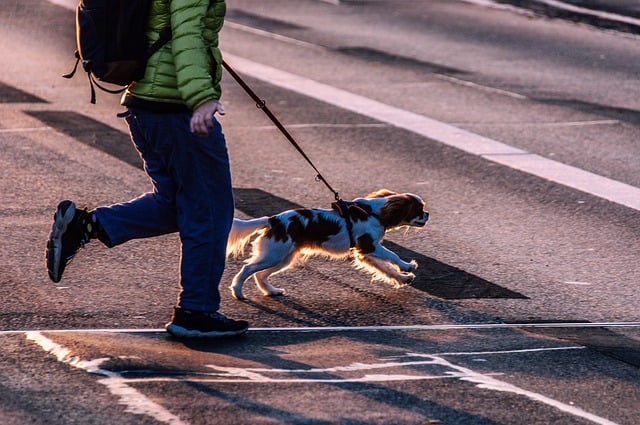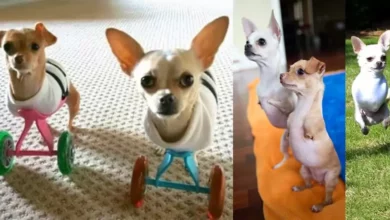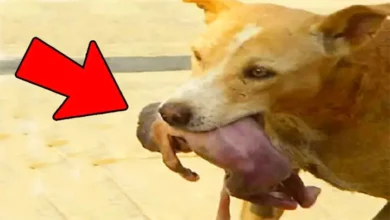
Every dog owner has obedience problems at times, and it’s not hard to believe that you are alone with your dog’s behavior problems. Don’t worry! Many other people will have similar obedience problems and the good news is that these difficulties can be overcome with a little time and patience.
1. Potty Training Problems
Dogs naturally prefer to go away from their dens to relieve themselves. However, there is a problem when the dog does not understand that the whole house is his home and also when the dog is not allowed to go out often enough to urinate. So, if you don’t let your dog out often enough, the problem is not hard to solve! However, once a dog has urinated indoors, he may think it’s okay to do it again and again.
Set up a routine to have the dog relieve himself at the same time each day, and praise him highly. However, don’t get upset if your dog urinates indoors. Rage and yelling are not helpful when training a dog. Make a sudden noise, such as clapping your hands, when the dog begins to relieve itself inside the house, then immediately take the dog outside so it can begin to make the connection between outside and urinating. This requires constant vigilance and a lot of patience on your part, but it’s worth it.
2. Canine aggression
There are several reasons why a dog may become aggressive. If you adopted an adult dog, it may have been treated poorly as a puppy. If you raised the puppy without proper training, the dog may try to assert its dominance over you. When a dog is bored or has too much energy, it may have developed anxiety problems and these will need to be moderated by your strong, alpha leadership.
Food aggression is very common. If your dog is showing signs of food aggression by slapping or biting if you approach his bowl, you need to teach him to think differently by establishing a feeding program. Start feeding him only 2 or 3 times a day. By becoming the provider of the food, the dog sees you as the source of the food, instead of trying to protect what he feels is his.
Aggression directed at children and strangers. The training used to eradicate this aggression uses positive reinforcement. Put your dog on a leash and stand at a distance from the cause of the aggression (children). Praise and treat your dog, then move closer to the source of the aggression. The dog will eventually appreciate this as a source of reward and pleasure and will become enthusiastic rather than angry and aggressive.
Aggression toward other dogs in the house. This may be a sign that your dog does not have a positive leader in the pack and that your dogs are fighting each other for that role. If this happens, you need to take on the role of a dominant leader. Very often, simply presenting clear leadership will stop any negative behavior from the dogs in your household. Also, when walking with your dog, avoid making a fuss when a dog approaches. Your dog takes advantage of your nervousness and will react accordingly, especially if the dog is on a leash.
3. Unwanted digging
If a dog digs, it’s because he has a deep-seated reason for doing so. Often he enjoys it, but sometimes it can become obsessive. Unfortunately, no matter how much he enjoys digging, the dog is probably destroying your garden or yard! In many cases, digging is the result of excess energy and boredom, and the dog may be using digging to vent that excess energy. Be sure to exercise and play with your dog and don’t leave him alone outside for long periods. Protect areas of your yard that you don’t want to be dug up with fencing and netting, and use strong-smelling deterrents. Provide a designated digging area for the dog and take him there every time he starts digging. He’ll get the hang of it!
4. Barking
All dogs bark from time to time, either to show their enthusiasm or to tell you they are bored. The problem is that some dogs never stop barking. The goal is to reduce obsessive barking, not to try to stop all barking.
Never give your dog what he wants when he barks. If you must wait for the dog and listen to his barking, do so! Giving the dog what he wants (especially your attention) when he barks will only teach him to continue. Basic training can be especially helpful in reducing your dog’s barking. Teach the dog to sit, lie down, and be quiet. These basic commands cause the dog to turn its attention back to you and away from whatever it is barking at. So, when your dog barks excessively, use the sit command, until the barking stops, then reward and praise him for his correct and calm behavior. Again, this will take time and a strong will to succeed!
5. Chewing
Chewing starts when the dog is young and teething, but as your dog becomes more mature, chewing can become a significant and unwanted problem. Owners who give their puppy old shoes or socks to chew on basically say it’s no big deal. If you did this when your dog was a puppy, you’ll need to take the time to rectify the behavior you created.
Make sure you have a substitute, such as a piece of rawhide to chew on, on hand when the dog starts to chew on a cushion or shoe and give it to the dog immediately. There are also sprays available at most pet stores that are unpalatable to the dog and help deter chewing on particular objects. In addition, you must teach your dog to “leave it”. This command takes time to understand, but it will make a huge difference in the dog’s chewing problem, as well as other occasions when your dog picks up something unwanted while you are out!
6. Jump
Dogs love to jump because it’s a way to show their enthusiasm. However, this can be dangerous, especially if your dog is large and there are young children around. Don’t grab the dog’s paws and push them away. While this is effective in the short term, it will not work in the long term, as you are giving him the attention he is seeking. The most effective treatment for jumping is to ignore the dog. Turn away from him and ignore him. Don’t look at your dog, communicate with him, or touch him for the first few minutes you enter the house or room. Once he has given you his attention, you can praise him gently and kindly. Don’t excite him again, just give him a little nudge and even a treat. This way, the dog will understand that he will only receive your attention when he is calm.
7. Storming out the front door
When the front door opens, your dog is not aware of any danger, just an exciting experience – reminding him of other animals, walks, and lots of fun. To avoid this, you must first make sure that no one opens the door until you know where the dog is and that he is out of reach to get out.
Start with the basic commands – sit, stay, and down. These basic commands are extremely important to get and keep your dog’s attention so that he stays put and doesn’t rush for the door. It won’t solve the problem immediately, but to begin the training process, the dog must know these commands. As you progress, you will teach your dog that the door is your territory and he cannot approach it without your distinct permission. Whenever your dog approaches the door, use these commands to stop his progress until he no longer attempts to approach the door without you.
8. Pulling on the leash
For many dog owners, walking is one of the most nerve-wracking events of the day, rather than one of the most enjoyable! To start training, you need to start at home.
When you start the walking routine in the house, always have your dog sit and stay first. You need to put the dog in a calm, submissive state, where his energy is directed toward obeying your commands. By channeling this energy, you can eradicate the mood swings that usually occur before going out. What’s important here is that you remove the leash if the dog becomes excited and noisy. Do not reward this behavior, wait until he is calm before continuing. As soon as the dog starts pulling on the leash, start from the beginning and make him sit. It may take time to teach a dog that it can’t pull with excitement, but if you go back to the beginning, again and again, the dog should eventually understand. Once you finally get to the curb, you must continue the procedure used at home. If the dog pulls too hard or starts to get ahead of you, back up a few steps and have him sit and stay until you are ready to move again. Your dog will discover that he can’t move forward until the leash is relaxed. Bring treats with you (or a clicker if you’re using it as a training method) and when your dog is walking properly by your side with a loose leash, reward him.
9. Moaning
If a dog whines because of separation, it is important to teach your dog to accept your absence. Consider having a single room or crate for the dog to stay in when you go out. By having its own space to go to, like a “haven,” the dog will feel more relaxed in your absence. Don’t make too much of a fuss before you go out and when you come in. To teach your dog to relax when you go out, you need to practice doing this while staying home. Put the dog in a separate room or crate. You will have to listen to him whine for a while, but you mustn’t return to the room until the dog stops whining.
Not all whining in dogs is related to anxiety. In some cases, it is simply a matter of getting recognition or a side effect of excess energy. Sometimes it may be an attempt to get attention. Keep in mind that it is always better to ignore them than to react to their bad behavior and the dog will soon learn not to cry for attention.
10. Separation Anxiety
A dog is a very social animal and when left alone, if you go out, he is afraid and worried that you will not come back. Whether it’s whining, barking, nipping, digging, or tearing, a dog with separation anxiety is very difficult to manage.
When you go out and come home, it’s essential that you don’t make too much of a fuss over your dog and that you ignore any excitable behavior. In cases of moderate anxiety, simply not paying attention to your dog for a short time (leaving and returning) will greatly reduce his anxiety.
For more severe anxiety, start by leaving your dog alone for very short periods. Do not give the dog any attention when you return. Just stay calm and wait until your dog is calm. Then start again. As the days or weeks, go by, increase the length of these periods, until you can leave your dog alone for a whole day.
Your dog is just a dog, and he is not trying to hurt your feelings, even if he is behaving the way he is now. The dog needs help and guidance from your owner to become a well-behaved dog without obedience problems.






